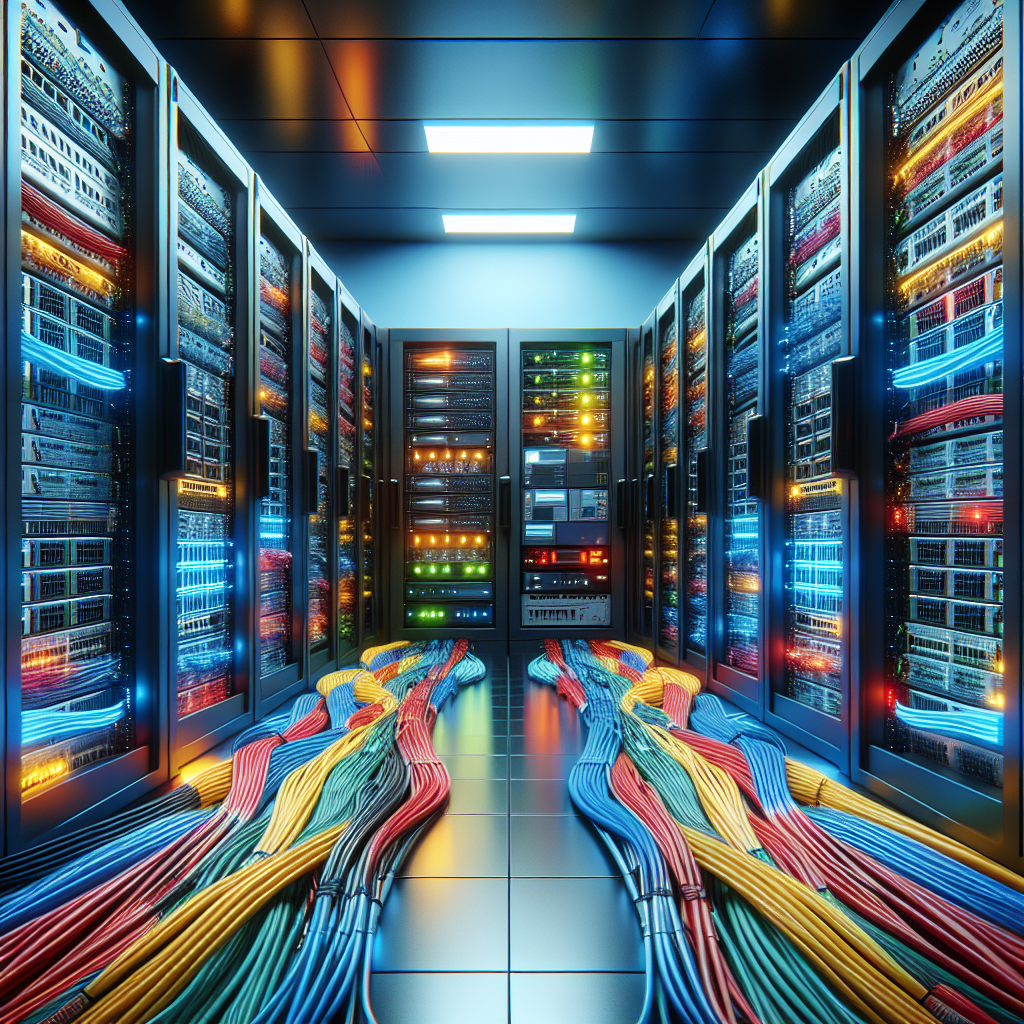Your cart is currently empty!
The Impact of Data Center Cabling on Network Performance: How to Improve Speed and Reliability

In today’s digital age, data centers play a crucial role in supporting the increasing demand for storage, processing, and networking capabilities. However, one often overlooked aspect of data center infrastructure is cabling – the physical layer that connects servers, storage devices, and networking equipment. The quality and design of data center cabling can have a significant impact on network performance, speed, and reliability.
The way data center cabling is structured and organized can directly affect the efficiency and effectiveness of data transmission. Poorly organized cabling can lead to signal interference, data loss, and increased latency, all of which can degrade network performance and reliability. On the other hand, well-designed and properly installed cabling can optimize data flow, reduce latency, and improve overall network speed.
One of the key factors that influence data center cabling performance is the choice of cabling technology. Traditional copper cabling, such as Cat 5e and Cat 6, has been widely used in data centers for many years. While copper cabling is cost-effective and easy to install, it has limitations in terms of bandwidth and distance. As data center networks continue to grow in size and complexity, many organizations are turning to fiber optic cabling for its superior speed, bandwidth, and reliability.
Fiber optic cabling uses light signals to transmit data, allowing for faster and more efficient data transmission compared to copper cabling. Fiber optic cables also have a much higher bandwidth capacity, enabling data centers to support higher data volumes and faster data speeds. In addition, fiber optic cables are immune to electromagnetic interference, making them more reliable in high-density data center environments.
Proper cable management is another crucial factor in optimizing data center cabling performance. Well-organized cabling can reduce cable congestion, improve airflow, and facilitate easier troubleshooting and maintenance. Cable trays, racks, and labels should be used to ensure that cables are neatly organized and easily accessible. Regular cable maintenance and inspections should also be conducted to identify and address any potential issues before they impact network performance.
In addition to choosing the right cabling technology and implementing proper cable management practices, data center operators can also improve network performance by investing in high-quality cabling components and accessories. Quality connectors, patch panels, and cable testers can help ensure that cabling installations meet industry standards and perform optimally. Regular testing and certification of cabling infrastructure can also help identify any potential issues and ensure that the network is operating at peak performance.
In conclusion, data center cabling plays a critical role in the performance and reliability of network infrastructure. By investing in high-quality cabling technology, implementing proper cable management practices, and using quality components and accessories, data center operators can optimize network speed and reliability. As data center networks continue to evolve and grow, it is essential to prioritize cabling infrastructure to ensure that data can flow efficiently and securely throughout the network.

Leave a Reply